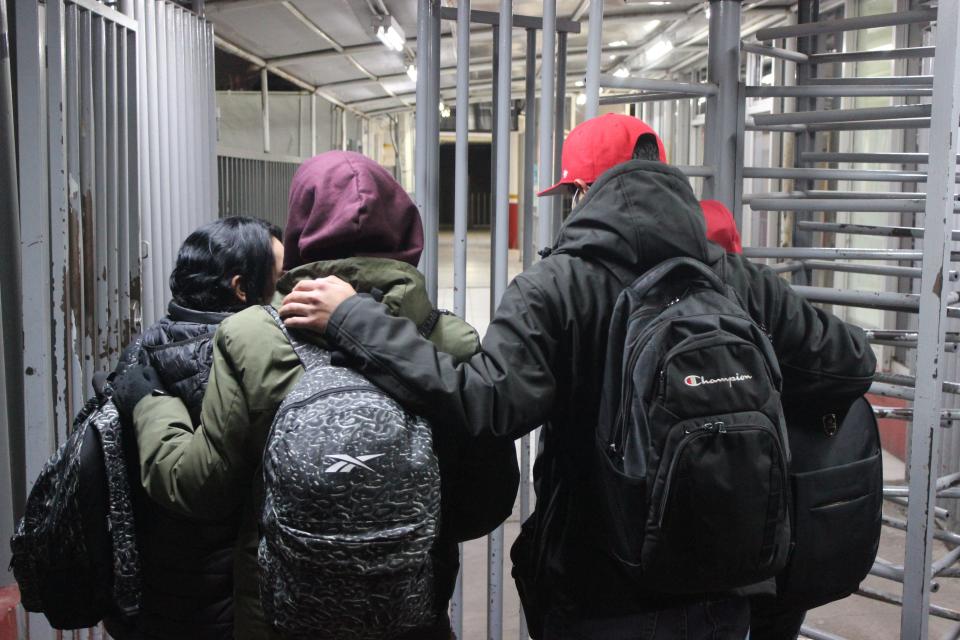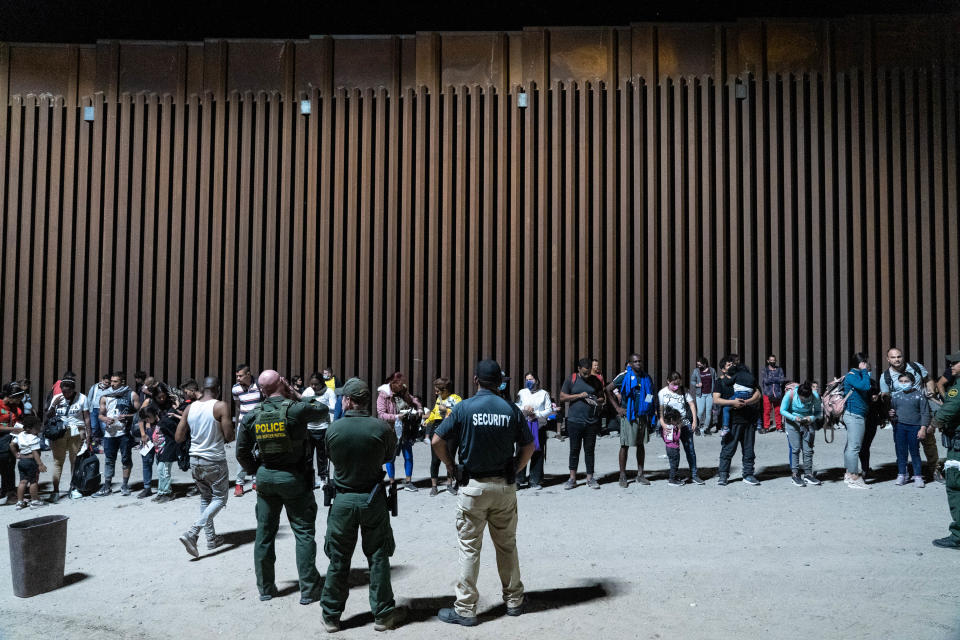When does Title 42 end? Here's what to expect at the border as the restriction goes away
Asylum seekers arriving at the U.S.-Mexico border after a controversial border restriction expires on May 11 will face a slew of Biden administration policies and increased consequences under pre-pandemic immigration law.
U.S. officials are estimating that migrant encounters along the southern border could rise to 10,000 per day when the pandemic-era Title 42 restriction is expected to sunset. El Paso, Texas, already is seeing a sharp increase in migrants arriving in the border city ahead of the expiration date.
Border detention centers along the border have already exceeded their capacity with more than 20,500 migrants in U.S. Customs and Border Protection custody as of April 29, according to CNN.
Title 42 has been used to rapidly expel migrants nearly 2.8 million times in over three years.
When Title 42 expires, border officials will return to fully enforcing Title 8 of the Immigration and Nationality Act. Asylum seekers will run up against a patchwork of Biden administration policies that couple increased consequences with expanded legal pathways.
“It's going to be a messy situation for all involved,” said Ariel Ruiz Soto, policy analyst at the Migration Policy Institute.
Here’s what border processes will look like after Title 42.
What happens at the US-Mexico border when Title 42 ends?
We’re not sure.
It’s still unclear what the situation will look like when the policy lifts in Arizona at 9 p.m. May 11.
The Biden administration is telling asylum seekers to schedule appointments at ports of entry through CBP One, the government mobile application. The app has been used by migrants to request exemptions from Title 42 in order to seek asylum in the U.S.

The Biden administration expanded the capacity of the app on Friday in order to accommodate for an increase in appointment requests when Title 42 lifts and it becomes one of the only methods to seek asylum.
It’s possible for long lines of people to form at bigger ports of entry along the border in the days following Title 42’s lifting, Soto said. Many migrants may not be aware of the CBP One process and may just arrive at ports of entry once restrictions are lifted.
“I don't think people are just, from one day to the next, going to understand or know how to apply for this process,” Soto added.
For subscribers: Ruben Gallego echoes Kyrsten Sinema on border preparedness as Sinema proposes extending restrictions
What is Title 8?
The Biden administration has committed to returning to fully processing migrants under Title 8, the nation’s immigration law that was used for decades before the pandemic. Title 8 was concurrently in use with Title 42 in the years since the restriction was implemented in 2020.
Under Title 8, the U.S. is required to give asylum seekers the opportunity to undergo a credible fear interview with an asylum officer or present their case in front of an immigration judge. The credible fear interview gives migrants a chance to express their fear of persecution, torture or returning to the country they left.
If migrants arriving in between ports of entry fail their credible fear interview or don’t request asylum, they could be put into expedited removal proceedings and deported to their home country or to Mexico.

Mexico has agreed to continue accepting U.S. deportations of migrants from Cuba, Haiti, Nicaragua and Venezuela even after Title 42 expires.
If migrants pass their interview, they’re allowed to continue the yearslong process of seeking asylum in the U.S. Migrants can be placed in long-term detention centers or released into the country with notices to check in with Immigration and Customs Enforcement when they arrive at their final destination.
If migrants are released into the community, they may receive a notice to appear in court in front of an immigration judge at a later date. There’s a backlog of over 2 million pending cases in U.S. immigration courts, according to Syracuse University's Transactional Records Access Clearinghouse.
For subscribers: Pandemic-era border rules end next month, but new US migrant plan hinges on Mexico
More deportations expected after Title 42 ends
The return to Title 8 also means that migrants will be subject to harsher consequences, including a possible five-year ban on reentry to the U.S. and potential criminal prosecution for repeated crossing attempts.
Biden administration officials are expecting the return to Title 8 to reduce the number of migrants who try to repeatedly cross the border in the long-term.
The U.S. Department of Homeland Security announced that it would “double or triple” weekly deportation flights to some countries while expanding expedited removal proceedings for migrants with no legal basis to remain in the country.
The Biden administration also proposed a rule that would effectively bar migrants from asylum if they did not first request and be rejected from asylum protections in a country they passed on their way to the U.S.-Mexico border.
The Biden administration announced the practice of speeding up initial fear screenings for migrants in Border Patrol custody. The process would only take a few days instead of the longstanding 10 days it previously did.
The expedited interviews would give migrants less time to prepare for their fear screenings and reduce their access to legal counsel.
Have a news tip or story idea about the border and its communities? Contact the reporter at [email protected] or connect with him on Twitter @joseicastaneda.
This article originally appeared on Arizona Republic: When does Title 42 end? Here's what to expect going forward